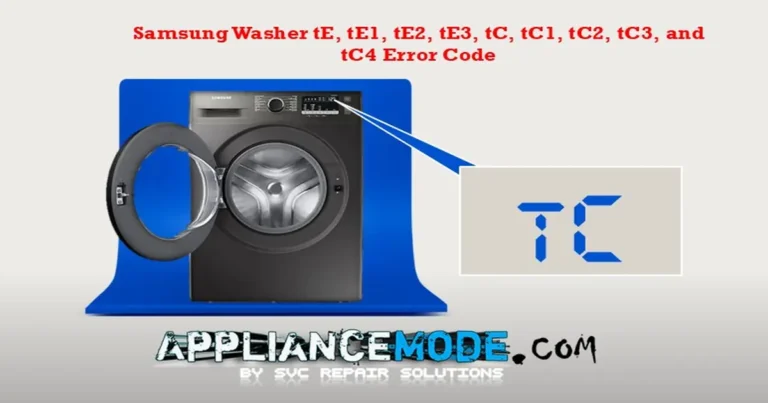One of the most frequently encountered issues reported by customers is the appearance of the error code 1LC1 or LC1. This code signals the presence of a leak and, more importantly, pinpoints the top washer as the root cause.

This guide will delve into the specifics of this error code, its implications, and the steps you can take to effectively address and rectify the leak in the top washer.
Samsung Flex Washer 1LC1 or LC1 Water Leak Error Code Explained!
While the Samsung FlexWash error code 1LC1 or LC1 often points to a leak sensor and/or broken or disconnected hose, it doesn’t necessarily indicate a faulty sensor itself. In most cases, the sensor is functioning correctly and alerting you to a potential leak elsewhere in the system. Therefore, while inspecting and troubleshooting the sensor itself is important, it’s crucial to focus on identifying and addressing the root cause of the leak.
This blog post delves deeper into the intricacies of Samsung FlexWash leaks, equipping you with the knowledge to identify and tackle the root cause of the issue. We’ll walk you through the key aspects of these leaks and provide practical tips for effective troubleshooting.
Step-by-Step Guide to Diagnosing and Fixing a Samsung FlexWash Washer Leaking Problem
The common cause of Samsung FlexWash leakage
One common cause of Samsung FlexWash leaks is related to the fabric softener dispenser. Specifically, the buildup of softener residue can cause the rubber seal to stick or deform, leading to water leakage. This is because fabric softeners often contain ingredients that react differently to temperature changes. For example, some thicken or solidify when exposed to cold temperatures and may not return to their original state. Fabric softeners are typically designed to maintain their viscosity at room temperature (around 15–25 °C or 59–77 °F), but their behavior can be unpredictable at lower temperatures.
How do fabric softener and seal rubber work in the Samsung FlexWash washing machine?
The interplay between fabric softener and the seal rubber in the Samsung FlexWash washing machine can sometimes lead to leaks. Let’s delve into how it works:
Fabric softener dispensing:
- Designed for the final rinse: Fabric softener is meant to be dispensed during the final rinse cycle to soften clothes without hindering the washing process.
- Thickening and sticking: However, if the softener thickens due to cold temperatures or improper use, it can become sticky and interfere with the dispenser’s movement. This is because the thickened softener acts like glue, hindering the compartment’s proper opening and closing.
Seal rubber and leak prevention:
- Preventing backflow: The seal rubber floats above the softener release hole, preventing water from prematurely flowing back into the dispenser.
- Controlled dispensing: When the rinse cycle reaches the softener dispensing phase, the water level in the dispenser drops, causing the seal rubber to float down and open the release hole.
- Leak potential: If too much softener is used or it thickens excessively, it can stick the seal rubber in the closed position. This can lead to an overflow during dispensing, triggering the leak sensor and causing the washer to stop as a safety precaution.
Preventing leaks:
- Use the softener correctly. To avoid these issues, ensure you use the recommended amount of softener and avoid using it in cold water cycles.
- Clean and maintain: Regularly clean the softener dispenser and the seal rubber to prevent residue buildup.
Remember: By understanding how fabric softener and the seal rubber work together, you can prevent leaks and ensure your FlexWash washing machine operates smoothly.
Recommendation for Solving the Leakage Problem with the Seal Cap Guide
Problem: Fabric softener buildup on the rubber seal can cause leaks in Samsung FlexWash washing machines.
Solution: Replace the rubber seal with the Seal Cap Guide (part number DC62-00702A) for effective leak prevention.
Key Features of the Seal Cap Guide:
- Raised edges and gaps: These features create space for softener to move freely, minimizing buildup and sticking.
- Smaller sealing surface: This reduces the area prone to leaks, making it more resistant to water seepage.
- Durable plastic construction: The plastic material is less likely to deform or degrade over time, ensuring a long-lasting seal.
Benefits:
- Effectively prevents softener buildup and leaks.
- Simple and quick installation.
- Long-lasting durability.
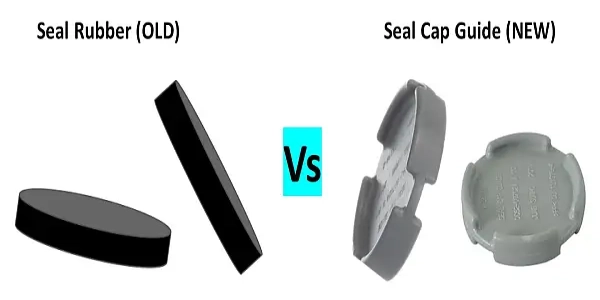
How to Disassemble the Samsung Flexwash Upper Washer
Let’s lift off the upper washer of your Samsung FlexWash. Check out this helpful video for a visual guide (watch the video).
Replacement of the defective part: seal cap guide
Step 1: Disassemble the softener dispenser hose
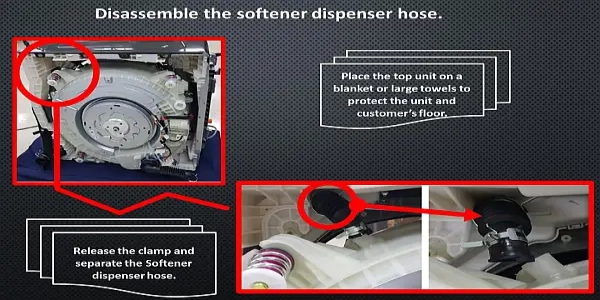
Step 2: Unscrew the CAP valve
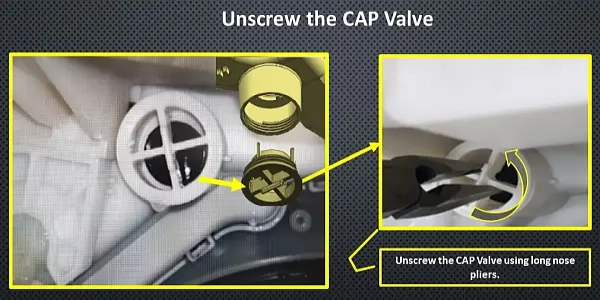
Step 3: Remove the seal rubber and insert the seal cap guide
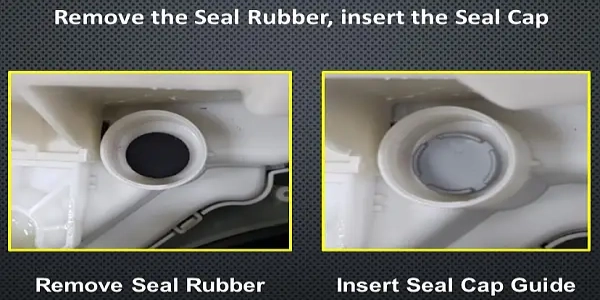
Step 4: Screw on the cap valve and secure the hose
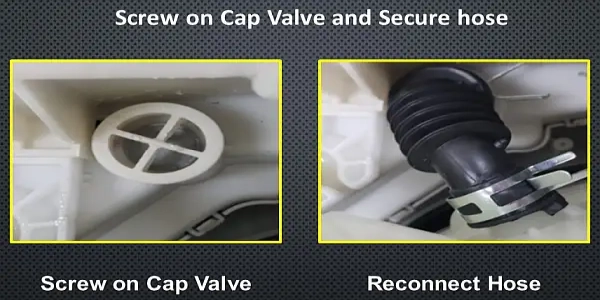
Step 5: Things you must do before reassembling the unit
- Examine the base, valve, hose, and tubing connections for leaks or cracks.
- Check for any blockages in the drain pump.
- Check the leak sensor resistance using an ohmmeter:
| Electric Part Name | Ohmic Value | Abnormal value |
|---|---|---|
| Leak sensor | ~ 0.2 – 1.2 Ω | OL |
- Confirm that the detergent, softener, or bleach haven’t spilled over the detergent compartment.
- Wipe the leak sensor area with a towel and eliminate any indications of water.
Step 6: Reassemble the upper washer
Conclusion:
This guide is designed to offer valuable insights and practical advice for pinpointing and resolving the underlying issue causing the Samsung Flex Washer 1LC1 or LC1 Water Leak Error Code.

I am a master Appliance Repair technician with over 35 years of experience in the field. I am passionate about helping people troubleshoot their appliances and fix common problems. My website, appliancemode.com, provides a wealth of information on troubleshooting common appliance issues and deciphering error codes. This website aims to empower people to tackle appliance repairs themselves and save money on service calls.


